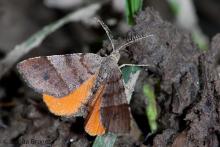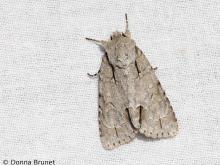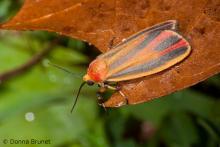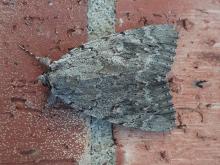Butterflies and Moths
Media

Species Types
Scientific Name
Nearly 150 species in North America north of Mexico
Description
Slim, delicate plume moths are instantly recognizable by their T-shaped silhouette, long legs, and muted shades of tan and brown. It can be hard to separate the various species.
Media

Species Types
Scientific Name
About 75 species in North America north of Mexico
Description
Missouri has 16 species of saturniid, or giant silkworm moths. Many of them are spectacular, including the cecropia, luna, buck, io, imperial, polyphemus, rosy maple, spiny oakworm, and royal moths.
Media

Species Types
Scientific Name
About 250 species recorded for Missouri
Description
Geometrid moths usually hold their wide wings spread flat against the surface they’re resting on. The caterpillars in this large family are twig mimics; called inchworms or loopers, they “walk” by humping their backs.
Media

Species Types
Scientific Name
About 30 species in subfamily Lymantriinae (formerly a family) in North America
Description
Tussock moths are named for the hairy caterpillars, which typically have distinct clumps of longer hairs. Adults do not eat, but the larvae of many species are serious pests.
Media

Species Types
Scientific Name
Mellilla xanthometata
Description
The orange wing moth’s bright orange hindwings identify it, even in flight. It’s abundant in all regions of Missouri.
Media

Species Types
Scientific Name
More than 2,500 species in North America north of Mexico
Description
One of the largest families of moths, noctuids used to be an even larger group. Many are tan or gray and resemble tree bark. Some are serious crop pests.
Media

Species Types
Scientific Name
Subfamily Arctiinae (formerly a family)
Description
Tiger and lichen moths, and their close relatives, often have bold patterns of black or white, plus yellow, orange, or red. Arctiid caterpillars are usually hairy, and some have stinging hairs.
Media

Species Types
Scientific Name
Eleven species in North America north of Mexico
Description
The flannel moths are a small family, and only three species are usually found in Missouri. Adults are stout and very hairy and fluffy looking. Caterpillars have thick hair containing stinging spines.
Media

Species Types
Scientific Name
Hypoprepia fucosa
Description
An attractive moth associated with woodlands, the painted lichen moth has a distinctive pattern of gray stripes on the forewings.
Media

Species Types
Scientific Name
Catocala spp., more than 100 species in North America north of Mexico
Description
Dozens of species of underwing moths (genus Catocala) live in Missouri. They have drab tan forewings that usually conceal bright orange, red, yellow, or pink hindwings with contrasting bold dark patterns.
See Also


Media

Species Types
Scientific Name
About 1,500 species in North America north of Mexico
Description
Adult caddisflies are mothlike. Their larvae are aquatic and build portable, protective cases out of local materials, including grains of sand, bits of leaves and twigs, and other debris.
Media

Species Types
Scientific Name
Corydalus cornutus
Description
Adult eastern dobsonflies are huge and mothlike, with large wings and a weak, fluttery flight. The fiercely predaceous aquatic larvae, called hellgrammites, are well-known to anglers, who often use them as bait.
About Butterflies and Moths in Missouri
Butterflies, skippers, and moths belong to an insect order called the Lepidoptera — the "scale-winged" insects. These living jewels have tiny, overlapping scales that cover their wings like shingles. The scales, whether muted or colorful, seem dusty if they rub off on your fingers. Many butterflies and moths are associated with particular types of food plants, which their caterpillars must eat in order to survive.





















